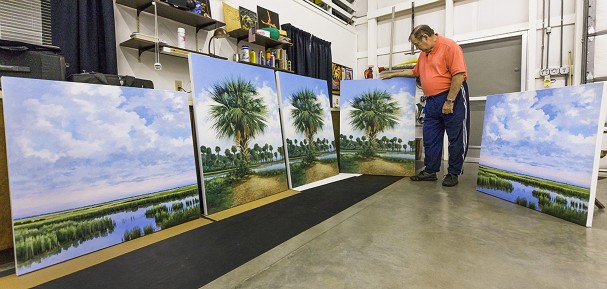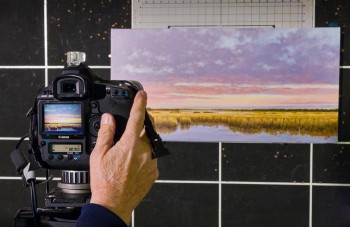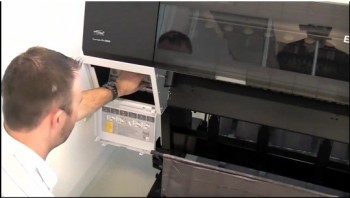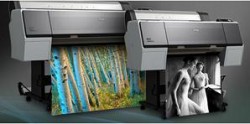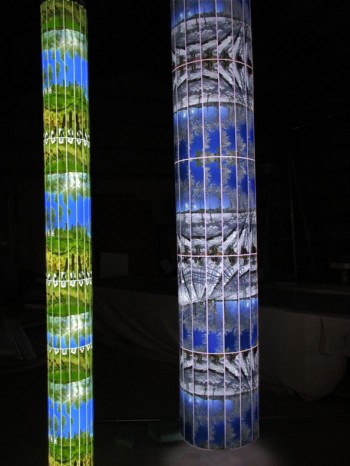 Stephen Schwarz was a New York City firefighter and a first responder on 9-11. He was injured early that morning, but would return to Ground Zero to help in the rescue effort.
Stephen Schwarz was a New York City firefighter and a first responder on 9-11. He was injured early that morning, but would return to Ground Zero to help in the rescue effort.
Artist Karen Giusti, who was his fiancé, says the cumulative effect of breathing in the airborne debris at Ground Zero led to his death in June 2010.
“Many 9-11 first responders have chronic health problems or are passing away very young. Stephen was not even 50 years old,” says Giusti.
Giusti channeled her grief into a series of art pieces called Three Seasons at Black Forest Farm, which will be displayed at the Katzen Arts Center at the American University Museum College of Arts and Sciences in Washington, D.C., and will also travel to sites in New York City.
Three Seasons at Black Forest Farm is essentially a series of light pillars using photographs Giusti captured at Schwarz’s farm in upstate New York composed together to communicate the essence of her memorial art. So far, Giusti has built five pillars, but is contemplating up to 20 more as the exhibit begins to travel.
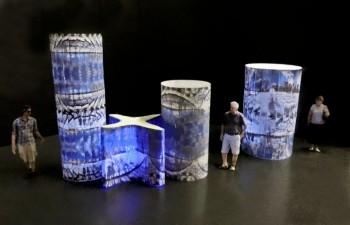
“It’s about keeping time and the concept of time standing still; things you think of when someone passes away and how you respond, grow and what occurs to you during that time,” explains Giusti. “It’s also an artistic interpretation of scientific concepts of time where the photos are strings of time.”
The pillars are composed of hundreds of photos from Black Forest Farm stitched together, printed on LexJet 8 Mil Absolute Backlit in 40″ wide by 175″ long panels with her Epson Stylus Pro 9890, connected to each other with Velcro, suspended from the ceiling, and supported underneath by a slow-turning motor.
“At Stephen’s farm I stood in one place and shot at the ground and up, and then turned very carefully and came back down and around. I had a chart I stood on to make sure I would get the entire farm photographed in the round, almost like a holograph,” says Giusti. “It’s very fitting that it’s esoteric and ephemeral with the beautiful photographs stitched together, and I thought that using a hanging light pillar would be a beautiful effect to work with the imagery.”
Instead of building a tubular framework to hold the prints in place, Giusti found that the Absolute Backlit material was both flexible and rigid enough to be used as the structure itself.
“I was considering what kind of framework to use, but it turns out that the Absolute Backlit works fine because it is so durable and user-friendly – it doesn’t scratch and you can handle it pretty roughly – and you can get a beautiful shape out of it,” says Giusti. “Only an artist would get so excited about a print material.”

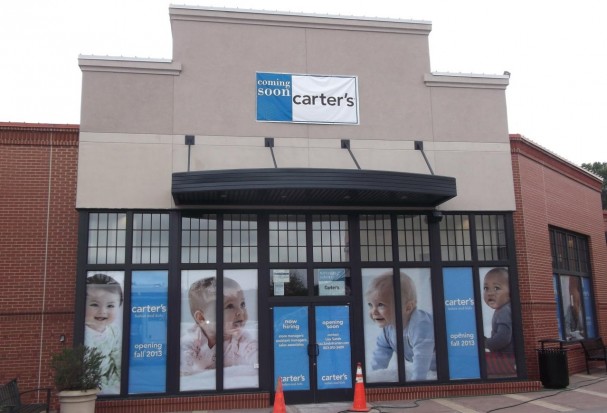 From the inside out, Jan Berte, owner of Legacy Graphics & Design, has found the ideal window graphics solution when Carter’s needs to hide the progress inside its stores as they’re being built or remodeled.
From the inside out, Jan Berte, owner of Legacy Graphics & Design, has found the ideal window graphics solution when Carter’s needs to hide the progress inside its stores as they’re being built or remodeled. “We had been using adhesive vinyl, which was a nightmare from all sorts of angles, especially removal and the adhesive residue. Then we came up with the idea to use Tyvek. It’s recyclable, which is a big thing for me since the graphics are temporary and thrown away after they’re used. A note goes with every single panel to recycle the material when they remove it,” says Berte. “The graphics are all applied second-surface, inside the windows using
“We had been using adhesive vinyl, which was a nightmare from all sorts of angles, especially removal and the adhesive residue. Then we came up with the idea to use Tyvek. It’s recyclable, which is a big thing for me since the graphics are temporary and thrown away after they’re used. A note goes with every single panel to recycle the material when they remove it,” says Berte. “The graphics are all applied second-surface, inside the windows using 